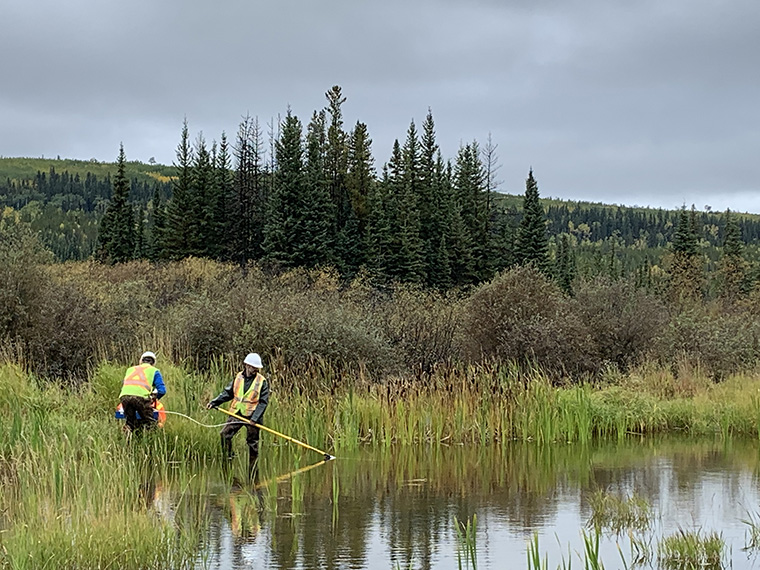Potential impacts were identified in a large creek next to our client’s former oil extraction and converted process water injection well in northeastern British Columbia.
The site had been shut down for over 30 years, and little was known about past operation and spill history at the site, or in the oil field floodplain that drained into the creek downstream. The concern was identified in the late fall and Regulators required an immediate response to and a remedial plan (if necessary) for the identified concern.
HESL was retained to characterize the aquatic habitat, surface water, sediment (including ecological toxicity), benthic invertebrate community and mercury-in-fish conditions of a river beside the well.
One of our local partner firms immediately went to the site to identify potential source areas, migration pathways to the creek and conduct a rapid aquatic characterization to gauge the risk and magnitude of the impact, before winter freeze-up set in.
This determined that:
- Surface remediation was needed on the site.
- The site needed to be regraded to prevent drainage to the creek.
- The aquatic risk in the creek from contaminants was moderate to low, but could cover a large area.
We developed a site remediation and grading plan and implemented it that winter. A detailed progressive aquatic impact assessment supported risk management of contaminants in the creek as physical remediation of the creek was unlikely to provide a relative environmental net benefit. The plan was approved by Regulators.
We characterized aquatic conditions over seasonal high and low flows, during a period of relatively stable sediment erosion-deposition (2015 to 2018), and during a year of severe channel erosion (2019), to describe contaminants over the range of conditions that could cause an environmental concern. The multi-year results from sampling did not identify any concerns with water quality.
A detailed sediment coring program identified potential concerns from hydrocarbons and bioaccumulation of mercury. Habitat assessments, toxicity testing, benthic invertebrate community assessments and fish-tissue sampling programs then provided lines of evidence to support a Human Health and Ecological Risk Assessment. These assessments narrowed the area of required risk management to a small area immediately downstream of the site. The fish contaminant monitoring program revealed that mercury bioaccumulation risk was not a concern.
The Risk Assessment and Risk Management Plan was completed and approved to move the site to long-term management and, ultimately, closure. Risk management provided more environmental benefit and less potential disruption of the environment than the previously proposed site remediation, with substantial cost savings.
Project Lead(s):
Client: Confidential
Location: North of Fort St. John, British Columbia
Sector: Petroleum
Date of Project: 2014 – Ongoing
Services Provided:






